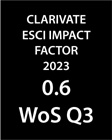Local Opportunity Structures for Planning-related Protest in Major German Cities
DOI:
https://doi.org/10.17649/TET.39.1.3566Keywords:
protest, political opportunity structure, local initiative, referendum, boroughAbstract
Urban development in Germany is often challenged by civic protest. This is despite mandatory participation at an early stage of the planning process, a variety of democratic participatory innovations, which differ from one federal state to the other, and informal formats of participation applied at the local level. There is a growing acceptance that protest is a normal form of participation and that planners must extend their repertoire accordingly. In order to identify a typology of planning-related protest based on correlations between different aspects of its framing, its course of action and the planning process to which it relates, the authors undertook a comprehensive survey in major German cities. In this paper, they try to establish, which relations exist between such protest, borough-level representative bodies and direct democratic procedures. Representative bodies and referenda are seen as parts of a local planning-political opportunity structure, a theoretical framework built on Eisinger’s political opportunity structures. This approach remains of great relevance to explain political protests and social movements, and helps to understand the different effects and uneven effectiveness of protest in varying contexts.
The paper presents preliminary results from the statistical analysis of the authors’ own database created through protest data mining of newspaper archives, online petitions and other public databases along with quantitative analysis of a public database on local initiatives and referendums. It found substantial but uneven levels of support amongst borough-level representatives for civic protest, and correlation between such support and protest effectiveness. The variation can partly be explained with uneven powers, density of representation and modes of election of sub-local councils. There are large differences with regard to the frequency of initiatives that seek a referendum, which reflect different thresholds and restrictions for direct democracy that are established at state level. Nevertheless, activist groups have used referenda to change or even stop unpopular urban projects, to popularise their own agenda and force decision-makers to prioritise alternative visions for urban development. In some cases they also managed to influence spatial planning’s own political opportunity structure.
Downloads
Published
How to Cite
Issue
Section
License
Copyright (c) 2025 Gerhard Kienast, Grischa Frederik Bertram

This work is licensed under a Creative Commons Attribution 4.0 International License.
Authors wishing to publish in the journal accept the terms and conditions detailed in the LICENSING TERMS.






